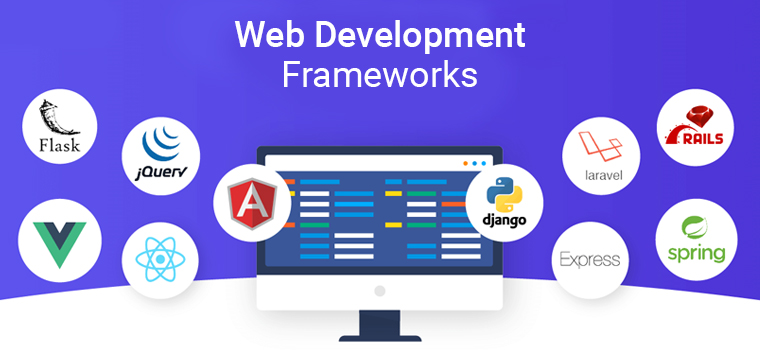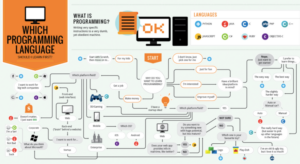These digital: Web Development Frameworks: The Unsung Heroes Behind Top-Notch Websites

web-development-frameworks-the-important-role-behind-top-notch-websites
The Power of These Digital Frameworks in 2024
The internet is brimming with stunning websites and applications, but what goes on behind the scenes to make these digital experiences possible? The answer lies in web development frameworks, the unsung heroes that underpin the entire web landscape. These frameworks act as the backbone, supporting everything from budding startups to established giants. In 2024, these digital tools are more critical than ever, enabling developers to create seamless, efficient, and scalable web applications.
Frameworks provide the essential scaffolding for building websites with sleek designs, lightning-fast speeds, and seamless compatibility across diverse devices. Constantly evolving to incorporate modern technologies and trends, these digital frameworks are the bedrock that empowers developers to create amazing user experiences efficiently. Whether you’re building a simple blog or a complex e-commerce platform, these digital tools are indispensable.
Why These Digital Frameworks Matter
2024 sees a dynamic shift in the web development landscape with new frameworks emerging and existing ones undergoing exciting advancements. This article will unveil the top 10 frameworks leading the charge, shaping these digital experiences as we know them. From front-end to back-end, these digital frameworks are revolutionizing how we interact with the web.
Programmers, to build exceptional web applications that stand out from the crowd, you need to master the art of web development frameworks. Think of them as your secret weapon for streamlined development, management, and upgrade of web applications, services, websites, and APIs. These digital frameworks offer a toolkit of invaluable components:
- Application Templates: These templates simplify information presentation on browsers, enhancing visual appeal and user-friendliness.
- Programming Environments: Frameworks provide a structured environment for code writing, ensuring efficient and smooth information flow within the web application.
- APIs for Back-end Data Access: Seamlessly connecting to server-side data is crucial for dynamic web application functionality, and frameworks facilitate this access.
- Code Libraries: Frameworks offer ready-to-use components and code snippets, significantly speeding up the development process, reducing the need to write everything from scratch.
Beyond these core components, frameworks empower developers with debugging capabilities, quality assurance tools, and code reusability. These features translate into tangible benefits such as accelerated application development, minimized code complexity and errors, and improved performance, reliability, and security.
Exploring Back-end Frameworks: The Engine Behind These Digital Experiences
The back-end development landscape is incredibly diverse, with each framework offering unique strengths. Let’s explore some of the most prominent players:
Django (Python): Known for rapid development and clean design, Django is a powerful framework that enables swift development and a practical, streamlined approach to design. It also comes equipped with built-in security features and scalability, making it a reliable choice for developers.
Express.js (Node.js): A lightweight, fast, and minimalist framework, Express.js is perfect for handling multiple tasks concurrently. It can be extended with additional packages to add functionalities and enjoys a large community that provides frequent updates and bug fixes.
Laravel (PHP): Laravel provides expressive and elegant syntax, simplifying common tasks encountered in most web projects. It comes with a built-in ORM for database interactions and features protection against common web attacks, balancing usability and security.
Each back-end framework possesses unique capabilities tailored to diverse development needs. The choice of back-end framework depends on the project requirements, developer expertise, and desired functionalities. For more insights on choosing the right tools, check out our guide on Which Programming Language to Choose for 2024.
Front-end Frameworks: Crafting These Digital Interfaces
In the dynamic world of web development, choosing the right front-end framework can significantly impact project success. Let’s compare the four pillars of the 2024 front-end framework landscape:
Angular: Backed by Google, Angular boasts a robust community, making collaboration and solution finding effortless. However, it is criticized for its complex syntax and large package size.
React: React’s popularity stems from its large developer community and comprehensive, well-maintained documentation. It ranks second in development activity and is known for its efficient review and integration processes.
Svelte: Svelte is gaining popularity due to its efficiency, transforming code into ultra-efficient JavaScript. However, its smaller community and fewer third-party libraries might limit its usefulness for more complex projects.
Vue: Vue is praised for its straightforward syntax, beginner-friendliness, fast rendering speed, and detailed documentation. Its compact size and flexible features make Vue an attractive choice for a variety of web projects.
Ultimately, the choice between Angular, React, Svelte, and Vue depends on specific project requirements, developer expertise, and desired outcomes. Each framework boasts its strengths and weaknesses, making them suitable for different types of web development projects. For more on optimizing your web design, explore our article on Choosing the Best Web Design Software for You in 2024.
Emerging Trends: The Future of These Digital Solutions
Looking forward, emerging trends reveal a powerful shift towards AI integration, sophisticated architectural patterns, and a relentless focus on user experience optimization. These trends signify continuous evolution and innovation in web development, promising a future filled with more personalized, secure, and interactive digital solutions.
AI is permeating web applications, automating complex processes, personalizing content, and delivering superior user experiences. Tools like ChatGPT are being integrated into web development to generate content and suggest code, ushering in a new era of AI-driven web application development.
Architectural trends such as serverless architecture, micro frontends, and headless CMS are also gaining traction. These approaches enhance flexibility, efficiency, and scalability, allowing developers to focus on code rather than server management. For more on managing data in this evolving landscape, check out our guide on Data Management: The Key to Success in the Digital Age.
Conclusion: Embracing These Digital Frameworks
Together, we have explored the remarkable advancements in web development, spanning both backend and frontend technologies. From established stalwarts like Django and React to emerging stars like Svelte, these digital frameworks are shaping the future of the web. By staying adaptable and informed, developers and businesses can ensure their applications not only meet current standards but also embrace the future of web development.
For further reading, consider these authoritative resources:
By leveraging these digital frameworks and staying ahead of trends, you can build cutting-edge web applications that stand out in 2024 and beyond.





